Hose ends, hose fittings – call them what you will but without them you can’t effectively join your hydraulic hose to anything. Sometimes, hydraulic hoses are attached to a simple pipe, or sometimes they are attached with two interconnecting ends which must mate perfectly to provide a good seal.
Regardless of what the coupling connects, the connection must be secure enough to hold the liquid, and maintain the pressure while remaining leak-proof and safe.
Depending on the application it can be dangerous to people and products to use the wrong hose fitting because hydraulic hoses carry fluids under pressure, and sometimes very hot fluids or chemically hazardous fluids. If the pressure generated inside the hose is too great for the hose end then there will be trouble.
Where the hose and fittings meet is subject to the greatest stress and it is often where leaks and blow off can occur so it is important that the hose and coupling are compatible and for both to have the same pressure rating.
Ideally hoses and couplings – hose ends or hose fittings – should be designed to work together, they should be purchased with the knowledge that they are compatible.
Tolerances may vary from one manufacturer to another and may not be interchangeable and may lead to hoses bursting, leaking at the fitting or failing more substantially under pressure.
Hose fittings come in a wide range of styles, material choices and attachment methods. There are crimp fittings, clamps, barbs and more. Most fittings can be split into reusable or permanent.
Reusable fittings are either screwed onto a hose or they can be bolted together, and they can be used more than once. A good example is the simple hose clamp that you find on radiator hoses in motor cars, you can use it over and over.
Permanent hose fittings can be crimped or swaged fittings and are squeezed onto the hose itself and become an integral part of the hydraulic hose assembly.
In order to connect hose ends together many fittings are either male or female. Hose ends can also be straight or have bends that vary from 30 degrees to 180 degrees. The seats inside the coupling are also different – some have a small ball or some a concave seat, then some have threads which can be metric or imperial.
Adaptors are also available to adapt a fitting to another but when and how to use these is important as they do not suit all applications.
Users must also be able to choose a hose end or hose fitting according to the fluid carried, the pressure, temperature rating, flow rate as well as size.
If there is any doubt on what hose fitting to use ask an expert at Norden as not choosing the correct fitting can be disastrous. Incorrect selection can be a safety hazard resulting in damage to property or persons.
Other things to consider are whether the connection is permanent, does it need a locking mechanism, is special equipment or are special tools needed.
There is a very good chance that if you need a new hose, you also need new hose fittings as sometimes they are not transferrable, but more importantly if the hose is old and worn or damaged then the fitting is probably old and worn or damaged also. For safety, change both.
Stainless steel, aluminium, steel or brass – each has its own application. For example, steel is probably the most used material but stainless steel is often used for carrying corrosive fluids or where the environment is corrosive. Steel is often used for high or low pressure hydraulic systems.
Aluminium is popular in motor vehicles as it is lightweight and also offers excellent corrosion resistance however, it is not as strong as steel, and more care is needed especially if there is a need to torque it to a particular tightness.
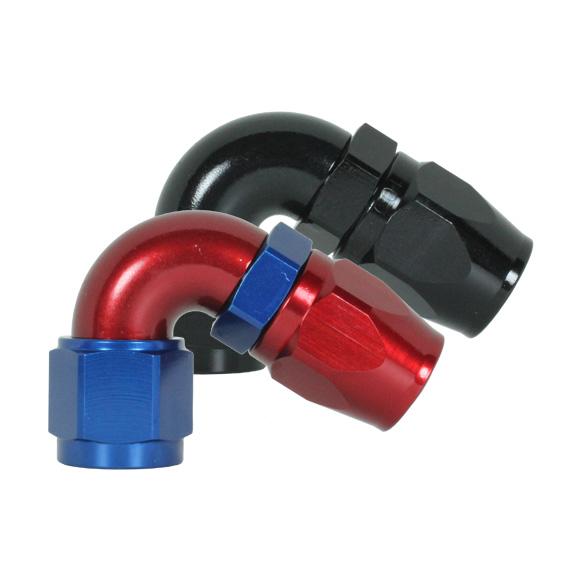
Hose ends in the Norden Hydraulics range start with the 100 series hose ends which are anodized 6061 grade aluminium and these are available in straight, 30 degree, 45 degree, 60 degree, 90 degree, 120 degree, 150 degree and 180 degree bends. These are made to fit 100 and 120 series hose.
In the 100 series, there is also a BSPP (British Standard Pipe Parallell) hose end available. These come in a range of decorative colours.
All ends can be rotated once assembled.

Norden Hydraulics 200 series hose ends are 6061 grade aluminium and are available in straight, 30 degree, 45 degree, 60 degree, 90 degree, 120 degree, 150 degree and 180 degree bends and are for use with the 200 series hose. These come in a range of decorative colours.

These Norden Hydraulics 200 series steel hose ends come in straight, straight stepped, 45 degree, 90 degree and 90 degree stepped variations and are plated using electroless nickel for a uniform coating with a high degree of corrosion resistance. They are a bright steel finish.
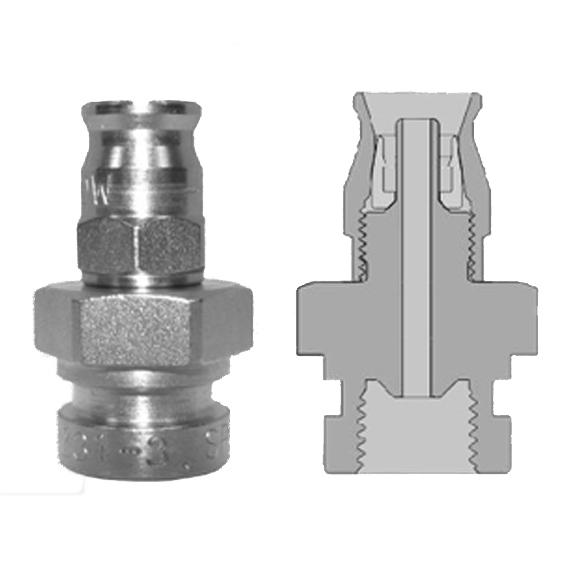
Special purpose hose ends that are often used in specific applications such as brakes or clutch use and they come in a variety of threads in metric and imperial for use in European, English, Japanese and American cars.
Norden’s range starts with the 220-224 male bulkhead, the 230-232 female inverted seat, the 233-24 female inverted seat, the 235 female inverted seat, the 240-244 female concave seat, the 241 female concave seat, the 242 female concave seat, the 242-BN female concave seat, the 250-253 male dual seat, the 254-254 male multi seat and the 260 life savers (for braising to a tube to adapt a hose).
There is a range of 261 series hose end tees with and without brackets and in steel or aluminium, in male or female fittings.
There are also 274 series male or female NPT hose ends, as well as 272 female swivel flat seat ends, 271 female 90 degree inverted seat and 270-273 female swivel inverted seat ends.

This hose support is made from aluminium and is designed to slide over -3 hose without PVC cover.

In the 400 series Norden Hydraulics has straight, 30 degree, 45 degree, 60 degree, 90 degree, 120 degree, 150 degree and 180 degree hose ends made from durable anodized aluminium to suit 400, 332 and 598 hoses.
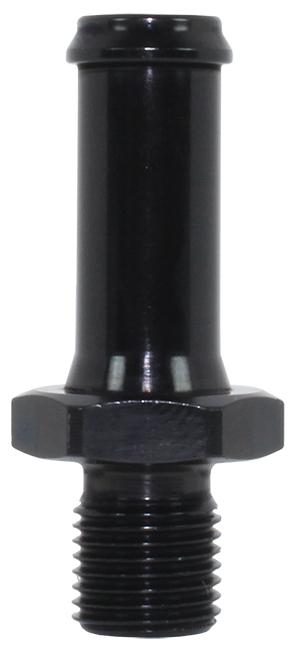
Norden’s 411 series hose ends are a push on hose end for use with standard style hoses and hose clamps, ideal for adapting aftermarket pumps and fuel rails to a standard fuel hose. They come in straight, 45 degree and 90 degree fittings.
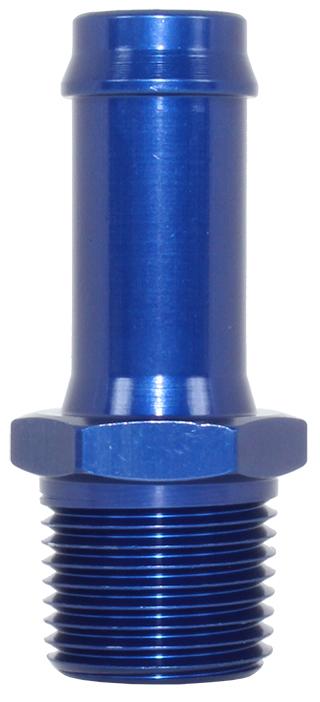
414 is a series of hose tails for push on hose and used with a standard hose and clamp, for adapting aftermarket pumps and fuel rails to a standard fuel hose. These are available in imperial, metric and NPT measurements, and with an O-ring port.
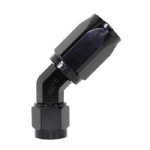
Norden’s 490 series hose ends are made from 6061 grade aluminium and hard anodised black for a tough finish as required with power steering applications. These are a non-swivel tapered design to suit the 490 series Powersteer hose. They are available in straight, 45 degree and 90 degree.
Installing hose ends depends on the type of hose end you need for the application.
Some installations require tools available in most workshops such as a vice, spanners and a cutting device, other installations require special tools specific to the task while the simplest installations may only require a screwdriver or a cutter.
As an example, to install Norden’s Start-Lite or 100 series hose you will need a bench vice, spanners, a saw, pliers, a Stanley knife and OH&S gear such as googles and gloves.
Each hose and hose fitting has its own requirements with respect to how it is to be connected. Likewise, the fitting tightness of hose ends varies, some ends require just a ‘nip up’ with a spanner while others have specific torque requirements.
If you are unsure of the operation contact Norden Hydraulics for instructions. You can also request the hose and fitting be supplied as a complete unit with the hose end/s fitted by the experts at Norden Hydraulics.